Auto
How To Identify Hybrid Car
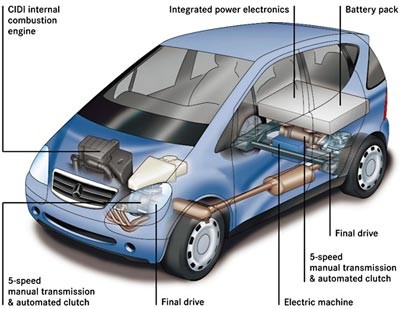
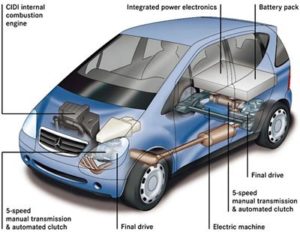
By Igono Joseph Okeme
Identifying a hybrid car shouldn’t be all that different, or strange. Most of the car brands today in the hybrid market have one thing or the other that have set them apart as leaders in their various fields.
It should not be difficult for you to spot a hybrid car that has just gone pass you down the street or on the road.
For instance, this information would only be based on Toyota’s Hybrid Synergy Drive (HSD).
Toyota calls its hybrid system HSD, meaning it derives its motion from a combination of either the internal combustion engine or the electric motors attached to its CVT (Continuous Variable Transmission).
How do you identity a hybrid?
* Toyota uses its hybrid logo, positioned at the passenger side front end and on the rear of the car.
* You notice when the car passes by you when driven, you hardly hear any noise. Though thus varies according to the speed demand ad at that time. If for instance the ECU (engine control unit) determines that the vehicle demands more speed and torque, the computer commands either both the engine and the electric motors to be in synchronization when driving. But if it (computer) decides less torque might be needed, the electric motors would be ones to keep running.
*You hardly see any emissions coming out if the tail pipe. However, emissions level could be visible, if only the internal combustion aspect of the system is ON.
The reason being that the by-product of fuel combustion is usually CO2 and others.
*It has two batteries positioned at the rear.
The small one is usually a 12 Volts battery, which powers the electronics of the car like the radio and the rest.
The other battery, commonly called a hybrid battery or a traction battery, has a nominal voltage of 244.8 volts (thus is for a Camry hybrid 2008).
The voltages of batteries vary from one Toyota hybrid to another, according to the number of cells in the battery pack.
Such batteries have the capability to electrocute one to death. So, please if you are not a qualified hybrid technician, it’s advisable you stay away from hybrid cars.
*At the hood (bonnet), you have what’s called an inverter/converter assembly. It resembles a conventional battery somewhat. It is positioned where your normal battery would be at the front.
The inverter/assembly system inverts and converts the hybrid battery’s voltage from 244.8 to almost more than twice the nominal voltage needed to power the electric motors that drive the car.
*Presence of ORANGE cables routed from the battery through to the front. The cables are equivalent to carriers of high tension voltages on our normal transmission lines on the street. I mean when touched carelessly, can electrocute someone. These cables are connected to your car’s electric AC system and water pump.
*The radiator coolant and the inverter coolants are separated differently.
* Power steering is electrically driven and has a separate ECU for its operation. You don’t see power steering fluids and spills anywhere in the engine compartment.
*The transmission is superb. It houses the two electric motors responsible for driving the car electrically and charging the hybrid battery.
The transmission is a variable continuous one, meaning when you drive, the engagement is not felt as the normal traditional automatics, where you feel the selections as the transmission selects.
The transmission also uses a special transmission fluid called Toyota’s World Standard fluid. Any other fluid would KILL the transmission system.
*The braking systems are bled differently. You can bleed the front brakes as a normal conventional car while the rear requires special softwares for its operation. The rear brakes are operated by the brake actuator and if proper tools aren’t used for the bleeding process, it would take ages to be able to bleed the air out of the rear brake system because of accumulated air bubbles.
*A READY indicator comes on when the hybrid is being started.
Remember. Hybrid cars don’t have kick starters and alternators.
With this piece, you shouldn’t find it difficult differentiating between a hybrid and a normal car when you encounter one.
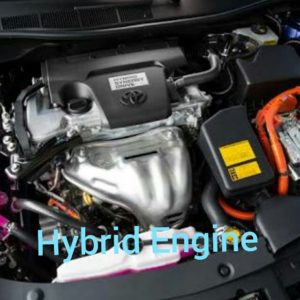
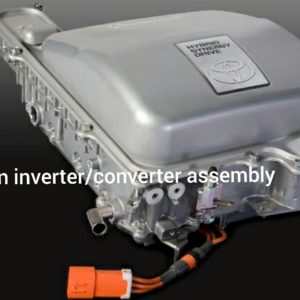
Auto
Dangote Cement Empowers Drivers, Riders With Life-Saving Kits in Ogun

By Aduragbemi Omiyale
As part of its efforts to ensure smooth festive period, the Ibese Plant of Dangote Cement Plc in Ogun State at the weekend distributed some life-saving kits to motorcycle riders and commercial drivers in the Gateway State.
Some of the items given to the commercial drivers and riders included helmets, reflective jackets as well as safety goggles.
The company said road safety campaign, which happened at the Ilaro Motor Park, was to curb preventable crashes by promoting responsible driving and riding habits as vehicular traffic surges towards the year-end.
Facilitators demonstrated the four major blind spots—front, passenger side, driver’s side, and rear—using live motorcycles and a stationed truck. Riders were stunned to discover that even an attentive driver could not see them in these zones.
A staff of Dangote Cement Transport for Health, Safety and Environment, Ms Ebere Okonkwo, explained that the initiative aligns with Dangote Cement’s broader mission to promote safer roads and foster harmony between truck drivers and other road users.
“Safety is a shared responsibility. This programme teaches road users especially the drivers and riders how to identify blind spots and equips them with safety kits. It’s part of our continuous effort to save lives.
“Overspeeding, impatience, and miscalculations remain leading causes of preventable road accidents. We urge riders to prioritize safe riding habits and strictly obey traffic regulations, especially during these remaining days into the New Year when vehicular movement peaks,” Ms Okonkwo said.
The Head of Transport and Safety at Ibese Plant, Mr Peter Abuad, led a practical session on basic issues in Road safety demonstrated how the drivers and the Okada riders could identify and avoid truck blind spots.
He highlighted four critical danger zones—directly in front, both sides, and behind heavy vehicles—warning riders to steer clear during lane changes and turns.
“If you are in any of these blind spots, the truck driver does not know you’re there. Avoid them at all times. Dangote Cement Ibese is committed to ensuring safety and improving lives,” he stated.
The Unit Commander of the Federal Road Safety Corps (FRSC), Sulaiman Kolawole Oluwadumiye, warned that excessive speed remains a leading cause of fatal crashes.
“Speed is sweet—the engine sounds powerful, the road looks open, and you feel in control. But the same speed that feels good for one minute can destroy a family in another second.
“The road has no respect for confidence or experience. There is no medal for the fastest driver and rider, only sorrow for the careless one,” he said.
He explained that speeding reduces a rider’s ability to spot danger and brake effectively, noting that articulated trucks pose even greater risks when control is lost.
“Most crashes involving motorcycles and trucks happen because riders unknowingly enter these danger zones,” he said, recounting a recent fatal crash caused by a rider overtaking on the wrong side and disappearing into a truck’s blind spot.
One of the beneficiaries of the programme, Mr David Odumoye thanked the management of Dangote Cement for deeming it fit to come to the park to meet the drivers and riders and enlighten them on road safety issues and donating safety items to them, adding, “Nobody is an expert on the road, no matter how long you’ve been riding. This training is very important. We thank Dangote for the initiative and the protective kits.”
Auto
inDrive Backs Smart Mobility Innovation With AOT Lagos 7.0 Sponsorship
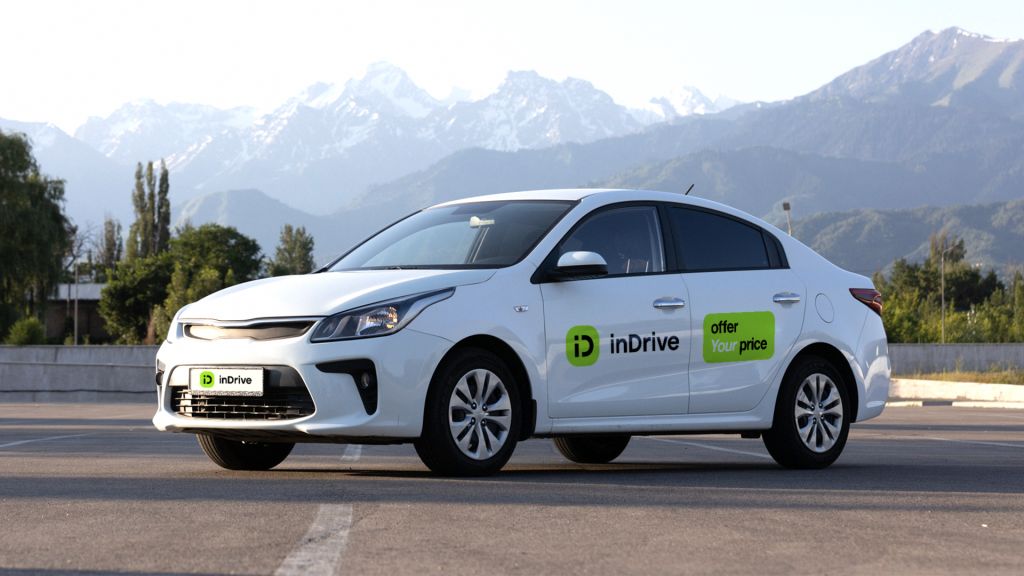
By Modupe Gbadeyanka
The 2025 edition of the Art of Technology (AOT) Lagos is going to be bigger and better with the inclusion of inDrive as its official sponsor.
The AOT Lagos 7.0, themed Future Technologies and a Sustainable Lagos, is scheduled for Thursday, December 4, 2025, at the Landmark Centre, Lagos.
inDrive, a leading global ride-hailing platform operating in nine African countries, is partnering with the Lagos State government to bring together policymakers, innovators, tech founders, investors, and global industry leaders to shape the future of technology and digital transformation in Lagos.
Through this collaboration, inDrive aims to contribute to high-level conversations on driver empowerment, sustainable transport models, safety, and affordability, key challenges affecting millions of daily commuters and mobility service providers in the state.
According to the Country Representative of inDrive Nigeria, Mr Timothy Oladimeji, the sponsorship underscores the company’s deep commitment to advancing equitable mobility systems and supporting conversations that drive long-term impact across the transportation ecosystem.
He noted that inDrive sees AOT Lagos as a critical platform for addressing mobility challenges and accelerating innovation within the state.
During the event, inDrive will be participating in one of the key sessions, discussing the topic From fuel to future: the rise of e-mobility in Lagos.
Aside from this, inDrive will also be hosting a side workshop themed The Market Share Victory – How inDrive Became Nigeria’s Second-Largest Ride-Hailing Player.
“We are proud to sponsor AOT Lagos 7.0 because it aligns perfectly with our vision to democratise mobility and ensure fairness for both drivers and riders.
“As Lagos moves toward a smarter, more sustainable mobility future, inDrive is committed to supporting solutions that prioritise affordability, safety, driver empowerment, and technological readiness.
“Through this partnership, we hope to contribute meaningfully to shaping policies and ideas that will redefine how millions of people move across the state,” he said.
Now in its seventh edition, AOT Lagos has evolved into a premier platform for advancing smart-city innovation, showcasing emerging technologies, and influencing the policy frameworks that shape the digital economy in Africa’s largest city.
Auto
FG to Open Section of Lagos-Calabar Coastal Highway December 12

By Adedapo Adesanya
The federal government is set to open Section 1 of the 700 km Lagos-Calabar Coastal Highway for public use from December 12 to 17, 2025.
The Minister of Works, Mr Dave Umahi, gave the assurance on Sunday in Lagos during a review of outstanding works on Section 1 of the highway project.
The section 1 is 47.47km long and has six lanes and two carriageways.
Mr Umahi said: “We also set aside April next year to have Section 1 and half of Section 2 fully completed and commissioned,” adding that the contractor handling the project, Hitech Construction Company Limited, had achieved more than 80 per cent of the reinforced concrete pavement.
“We are very grateful to God Almighty for his mercies, and to the President and to the contractor.
“If we are to pay for everything they have done, it will be very difficult to have this job done because there are places we didn’t envisage that we were going to be removing pits up to a depth of 20 metres.
“They had to do that because they are partners in progress for the development of the country.
“We have just about three kilometres to complete the entire sand filling from Ahmadu Bello Way to Eleko Junction, and we are excited at the work and the quality of what has been done,” the former Governor of Ebonyi State, said.
The new Controller of Works in Lagos, Mr Olufemi Dare, told the minister that a lot of settling was ongoing at Chainage 33 of the highway project, praising the contractor for high quality of work.
“Sir, it may interest you to know that the building standing is the palace of this community, and you saved this building, and they are extremely happy,” he said.
On his part, the Managing Director of Hitech Construction Company Limited, Mr Dany Abboud, said that the company would still backfill from Chainage 34 to Chainage 37.
“Dredging is ongoing, we are on track to deliver.
“We are monitoring the settlement in the swampy areas and the water body areas due to the change of alignment,” he said.
The highway, which commenced construction in March 2024, has generated a lot of controversy, with critics raising concern around cost and procurement structure.
-

 Feature/OPED6 years ago
Feature/OPED6 years agoDavos was Different this year
-
Travel/Tourism9 years ago
Lagos Seals Western Lodge Hotel In Ikorodu
-

 Showbiz3 years ago
Showbiz3 years agoEstranged Lover Releases Videos of Empress Njamah Bathing
-

 Banking7 years ago
Banking7 years agoSort Codes of GTBank Branches in Nigeria
-

 Economy3 years ago
Economy3 years agoSubsidy Removal: CNG at N130 Per Litre Cheaper Than Petrol—IPMAN
-

 Banking3 years ago
Banking3 years agoFirst Bank Announces Planned Downtime
-

 Banking3 years ago
Banking3 years agoSort Codes of UBA Branches in Nigeria
-

 Sports3 years ago
Sports3 years agoHighest Paid Nigerian Footballer – How Much Do Nigerian Footballers Earn




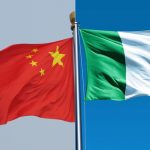







2 Comments